Visiting Keystone Truck and Tractor Museum
The Keystone Truck and Tractor Museum in Colonial Heights, Virginia is a fantastic automotive museum full of over 150 antique tractors and more.
Balcarce is a small town in the pampas of Argentina. Surrounded by one of the most fertile lands in the world is known for its historical estancias (Ranch), potato farming, and a dessert cake, my favorite “Postre Balcarce”, which includes meringue, cream, and of course dulce de leche.
Around the world though, the small town is known for being one of its heroes. A man that in 1947 decided to go to Europe and compete at the top of the motorsports scene in the 1950s. Juan Manuel Fangio would return to Balcarce after winning five world championships.
In 1979 the city started a plan to create a tribute to “el chueco” (the bowlegged) by building a museum in his honor and by extension to the history of motorsports in Argentina. The doors opened in 1986 in the former Bank 1906 building in front of the city plaza. It has become a place to visit for car enthusiasts around the world. Today the 50,000 plus sq. ft facility, which has six floors and is reminiscent of the old Mercedes Benz Museum in Stuttgart, is a jewel to car nuts.

On my latest visit, I was impressed with how well-kept this place is. Cars, trophies, memorabilia, and even Fangio’s racing gear are displayed in an elegant and orderly fashion. There are new extensions to the building that now feature Froilan Gonzalez’s career (Ferrari’s first GP win) and a replica of Fangio’s shop in the thirties.
As a teenager, JM Fangio learned to work on cars at the Studebaker Dealership in town. In 1928, being 17 years old, he was offered to drive a Chevrolet Campeon at a race by his boss Miguel Viggiano. These cars were built in the San Telmo neighborhood of Buenos Aires by an American company. The “Especial Argentino”, as it was known, became a success with almost 2,000 orders in 1925, its first year of production in the country. As the race date approached, and perhaps because Fangio was underage, his duties change from driver to co-driver, which at the time was the mechanic role, the one that kept the car running through the race. As it turns out, his mechanical know-how made a difference and allowed the car to finish second in the 182 KM (120 miles) race through the dirt roads around Coronel Vidal.
On display, there are most of Fangio’s race cars or replicas that follow his exceptional career. From the 30’s and 40’s, the focus was on the most popular series in South America. The long-distance events raced from town to town or even country to country. The Gran Premio de Sud America run from Buenos Aires to Lima (Peru), but in 1948 the checkered flag dropped in Caracas, Venezuela after 9576 miles. Fangio had his first major accident in the event, and his copilot lost his life in the crash.
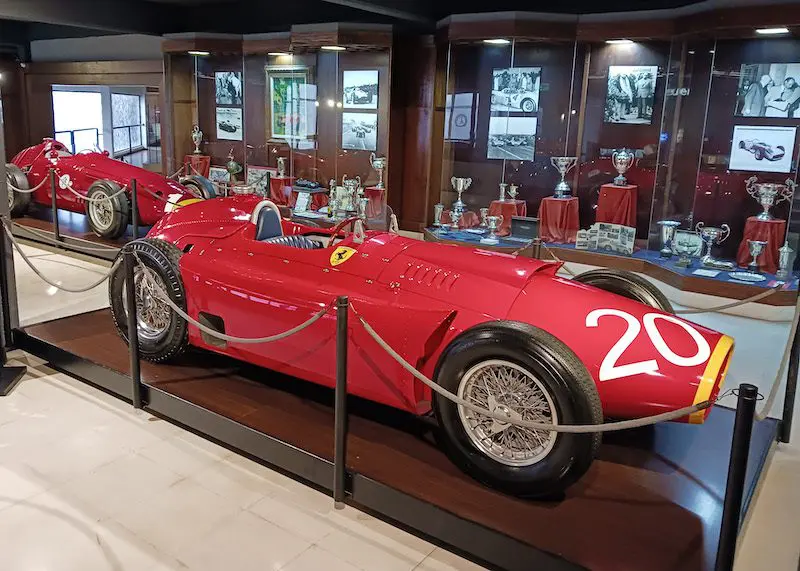
The Turismo Carretera (TC) is the longest-uninterrupted racing series in the world. With such a tradition it equals (or maybe surpasses) the American NASCAR popularity in South America. Several cars from the early forties onwards let the visitor realize how precarious and dangerous was racing across the vast landscape of Argentina. With straights between towns that were 20 or 30 miles long, the cars would reach incredible speeds. The refueling was on the go. The co-pilot would grab a 10-gallon can hanging from the passenger window and start pouring the gasoline on the main tank behind the occupants’ seat at over 100 miles an hour. With multiple car examples throughout the series’ history, it is a pleasure to see how it was a long time ago.
JM Fangio‘s five Grand Prix world titles record stood for forty-six years. But the man was the best ambassador of the sport until his departure. He symbolizes an era long gone where media and money were put into the background.
Among the selection of cars at the museum you find.
1928 Chevrolet Campeon (his first entry)
1929 Ford A (his first race car)
The Buenos Aires- Caracas 1939 Chevrolet he raced (Replica)
1947 Chevrolet coupe “La Negrita” (Little black thing)
1948 Simca-Gordini (his first Grand Prix)
1948 Simca-Gordini T15 (his first 24 hours of Le Mans)
1951 Alfa Romeo 159 (first World Championship)
1954 Maserati 250F (second World Championship)
1955 Mercedes Benz W196 (Third World Championship)
1955 Mercedes Benz W196 closed-body version
1956 Ferrari 500 (fourth World Championship)
1957 Lancia-Ferrari (fifth World Championship)
The museum has more than a hundred cars and lots of memorabilia to browse for days. Something to see is the largest trophy ever created which was presented to JM Fangio by Rosario’s Argentineans Drivers Association and it’s on display near the entrance.
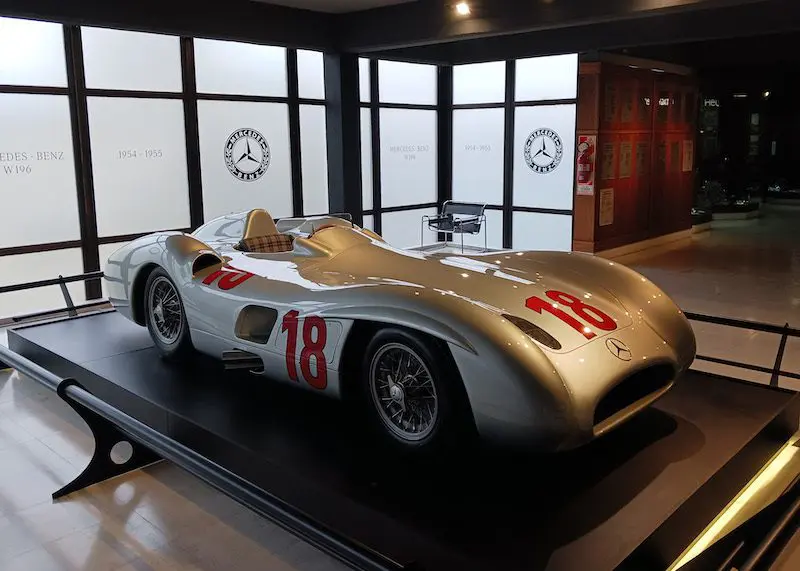
A day may not be enough to absorb the meaning of everything that is on display. For the motorsport fan, this place is full of history, the location, and Fangio’s mausoleum itself creates an ambiance like no other.
This town is about 260 miles from the capital city and you can reach it by car or bus. But you may be better off traveling to Mar del Plata first and staying in this beautiful beach city that offers all the amenities of larger metropolitan areas. From there it is just 40 miles through the green pasture surroundings. The experience is like traveling back in time and highly recommended.
By Ricardo Rodriguez-Long
Images via Ricardo Rodriguez Long
.
The Keystone Truck and Tractor Museum in Colonial Heights, Virginia is a fantastic automotive museum full of over 150 antique tractors and more.
The Tampa Bay Automobile Museum is a must stop place if you're in the Tampa, FL area. If you're cruising out of Tampa take a few extra hours and stop by.
The Panoz Museum in Hoschton, Georgia is a must stop for any automotive enthusiast, especially race fans. Not only is the Panoz hand made right on site but they also display various models in the museum, as well as some of the actual race cars and racing...
I recently had the opportunity to visit the Mustang Museum of America in Odenville, Alabama and I've got to say I was really impressed especially once I was told how recently the museum started.
automotive museum guide
Sign up to get updates about automotive museums right to your mailbox. Don't miss a thing. It's FREE.
There’s an ebb and flow to the vehicles Griot’s Garage presents in their museum-quality auto display. Many of the cars they shoot for their catalog covers earn a spot in the display.
A good deal of the time the cars in the display match the theme of their Caffeine & Gasoline cruise-in cars shows they put on the first Saturday of every month. Sometimes they just stock the display with cool cars. The bottom line is you’ll likely see something new every time you visit.
Although Griot’s garage in not actually a museum it is worth noting in the Automotive Museum Guide since this is an impressive collection you can visit.
3333 S 38th St
Tacoma, WA 98409
P: 800-345-5789
Email: customerservice@griotsgarage.com
Free
Plan: 1 hr
Monday – Saturday 9 am – 5 pm
Sunday 10 am – 2 pm
Image via https://www.facebook.com/GriotsGarage/
.
The Keystone Truck and Tractor Museum in Colonial Heights, Virginia is a fantastic automotive museum full of over 150 antique tractors and more.
The Tampa Bay Automobile Museum is a must stop place if you're in the Tampa, FL area. If you're cruising out of Tampa take a few extra hours and stop by.
The Panoz Museum in Hoschton, Georgia is a must stop for any automotive enthusiast, especially race fans. Not only is the Panoz hand made right on site but they also display various models in the museum, as well as some of the actual race cars and racing...
I recently had the opportunity to visit the Mustang Museum of America in Odenville, Alabama and I've got to say I was really impressed especially once I was told how recently the museum started.
automotive museum guide
Sign up to get updates about automotive museums right to your mailbox. Don't miss a thing. It's FREE.
There are no shortages when it comes to looking for road trips between automotive museums. Using the map feature on automotivemuseumguide.com makes this extra easy. However, sometimes you just need a little extra motivation, so here’s a trip you can plan in the south that’ll take you to 6 automotive museums in a round trip in under 500 miles.

Where you start is up to you, but for the purpose of this article, we are going to start in Chattanooga, TN with the Coker Museum at Honest Charley. You may be familiar with Coker tires, but if you’ve never been to this downtown museum you’re missing out. The building itself is even a destination.
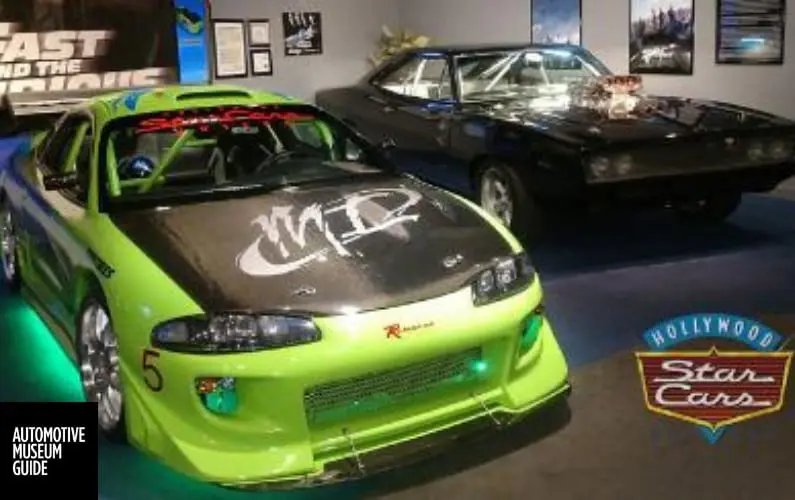
Next up we head over to the Hollywood Star Car Museum in Gatlinburg, TN. (153 miles) This museum is nothing like the previous museum, but if you enjoy seeing cars from the movies, you’ll love it here. Gatlinburg is also a bit of a tourist destination so you may also want to walk around the town to see what else the town has to offer.
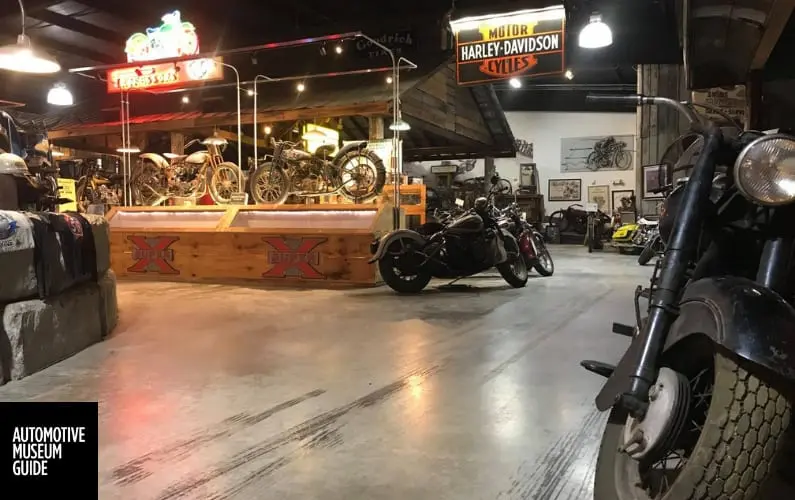
The next museum is only 50 miles away and again is completely different from the first two museums. Dale’s Wheels Through Time is a motorcycle museum. There are a couple of cars in the museum, but it is definitely an American motorcycle museum and it is packed with them. This museum was originally started by Dale Walksler who you’d often times see starting and riding motorcycles in and around the museum. Dale has since passed, but his son Matt has followed in his dad’s footsteps and keeps he keeps his father’s spirit alive in the museum.

A nice 92-mile drive south through the Smokey Mountains will take you to Miles Through Time Automotive Museum, not to be confused with Dale’s Wheels Through Time or Wheels O’ Time. This museum is located only 20 minutes south of Helen, GA, which is the 3rd most visited city in Georgia. You’ll see over 90 full-size vehicles and over 5,000 model cars, plus there is an entire replica town, including the original Phillips 66 filling station. Miles Through Time is located inside an antique store called Vintage Garage Antiques which is also located inside an old textile mill.
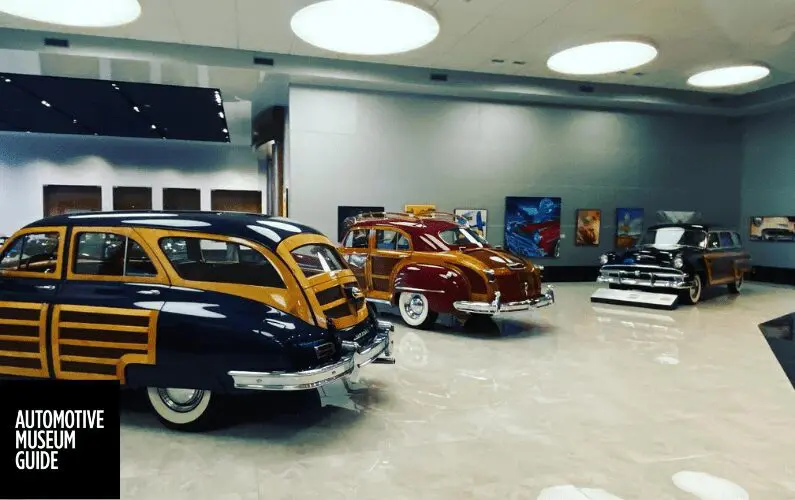
After you get your fill at MTT you’ve got a 117-mile drive west to the Savoy Automobile Museum in Cartersville, GA. Savoy stands alone from all the other museums on this trip as being the most fancy. The building and grounds are new and beautiful in this contemporary automotive art museum. There are multiple galleries that change monthly so there is always something new to see. There are many other museums to visit in Cartersville, including the Tellus Science Museum which also has a small collection of vehicles on display.
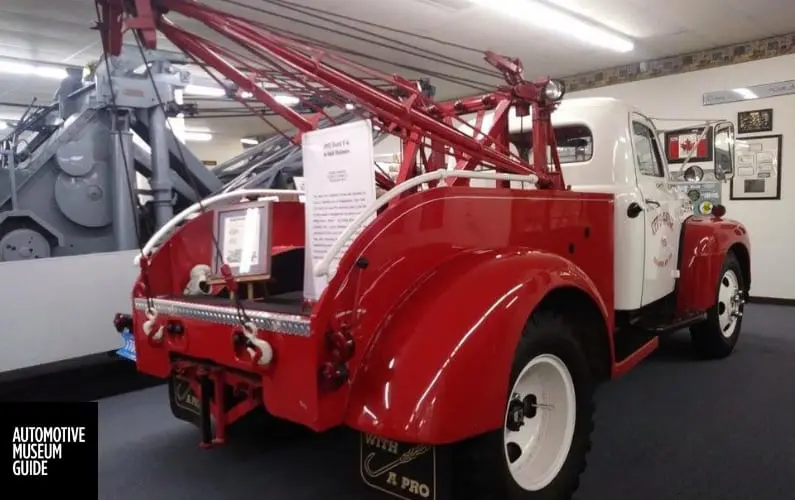
From Savoy, it’s a 74-mile trip back up to Chattanooga where you can visit the International Towing and Recover Museum. Not into tow trucks? Don’t let the name fool you, this is a super cool museum and after visiting you are going to be into tow trucks.
Total miles: 488
Total museums: 6+
.
The Keystone Truck and Tractor Museum in Colonial Heights, Virginia is a fantastic automotive museum full of over 150 antique tractors and more.
The Tampa Bay Automobile Museum is a must stop place if you're in the Tampa, FL area. If you're cruising out of Tampa take a few extra hours and stop by.
The Panoz Museum in Hoschton, Georgia is a must stop for any automotive enthusiast, especially race fans. Not only is the Panoz hand made right on site but they also display various models in the museum, as well as some of the actual race cars and racing...
I recently had the opportunity to visit the Mustang Museum of America in Odenville, Alabama and I've got to say I was really impressed especially once I was told how recently the museum started.
automotive museum guide
Sign up to get updates about automotive museums right to your mailbox. Don't miss a thing. It's FREE.
The Sarasota Classic Car Museum has been located on Tamiami Trail in Sarastoa, Florida since 1953. The 55,000 square foot building is the second oldest continuously operating antique car museum in the Nation.
But now, museum director Martin Godbey and museum Curator Blake Godbey were given a written notice on May 16, 2023, which terminates the museum’s lease.
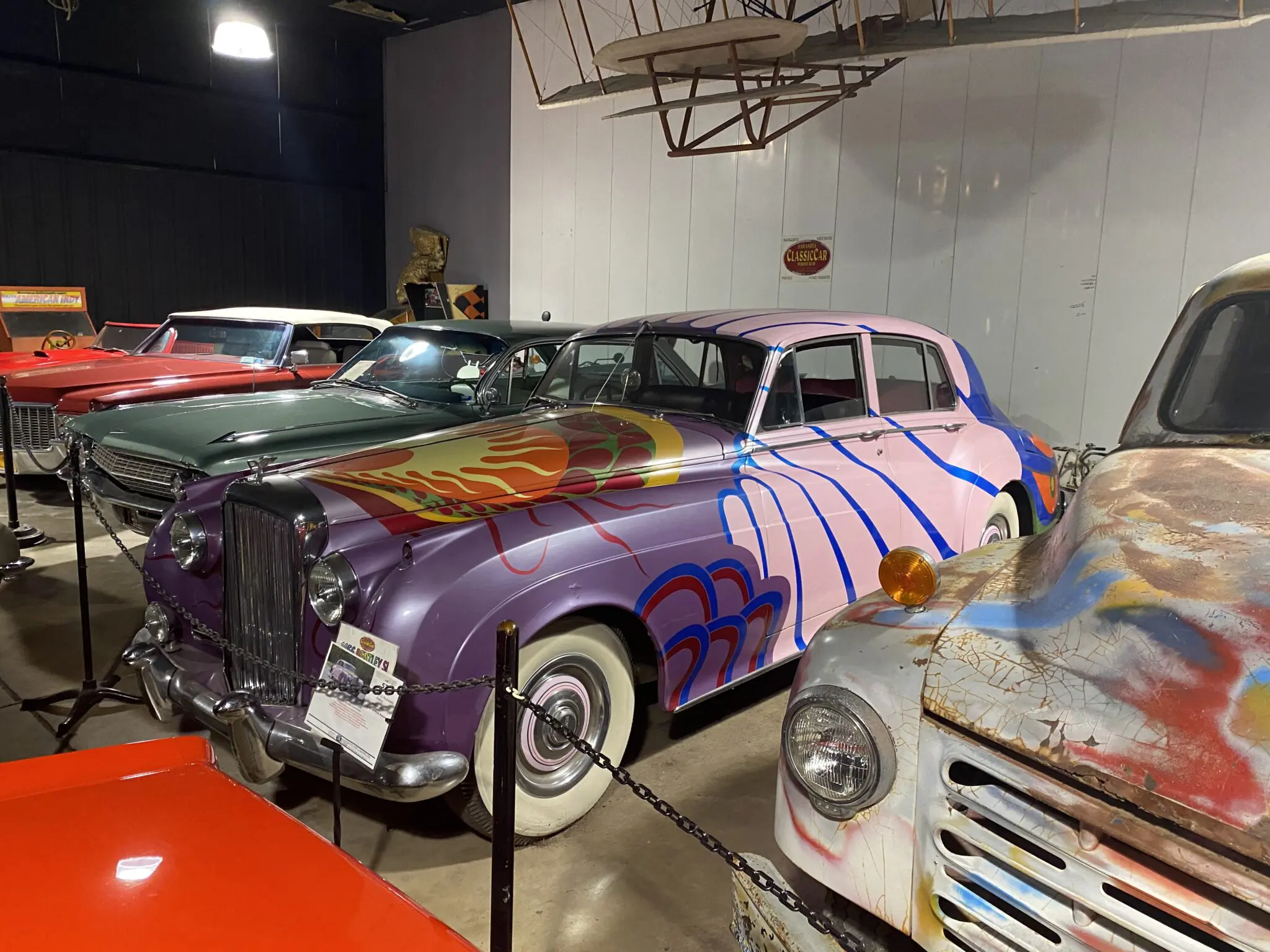
The property is owned by New College of Florida wh has leased the property to the museum for the last 20 years. Sarasota Classic Car Museum actually predates the college. The New College leadership is looking to replace the museum with a new athletic facility.
As of June 1, 2023 the New Collegeoard of trustees approved the plan to demolish the Palmer, Reichert and Knight buildings. This includes turning the car museum into a temporary space to accommodate student housing and other services displaced by the demolition.

Martin Godbey is still trying to get an extension from New College to give more time in an attempt to figure out what can be done with all of the museum’s artifacts. As of 1/9/23, Godbey has not been responded to and has until the end of June to vacate.
*UPDATE*
The Sarasota Classic Car Museum was able to negotiate more time with the New College and will remain open until October 2023 while they figure out a more reasonable exit plan.
Image via Sean Mathis
.
The Keystone Truck and Tractor Museum in Colonial Heights, Virginia is a fantastic automotive museum full of over 150 antique tractors and more.
The Tampa Bay Automobile Museum is a must stop place if you're in the Tampa, FL area. If you're cruising out of Tampa take a few extra hours and stop by.
The Panoz Museum in Hoschton, Georgia is a must stop for any automotive enthusiast, especially race fans. Not only is the Panoz hand made right on site but they also display various models in the museum, as well as some of the actual race cars and racing...
I recently had the opportunity to visit the Mustang Museum of America in Odenville, Alabama and I've got to say I was really impressed especially once I was told how recently the museum started.
automotive museum guide
Sign up to get updates about automotive museums right to your mailbox. Don't miss a thing. It's FREE.
Among the internationally prominent Buffalo Companies, the Thomas Motor Company ranks high. Not only did they provide America with a line of reliable and popular motorized bicycles, tricycles, motorcycles, and automobiles, they also created a World Champion Automobile. Buffalo Transportation Pierce-Arrow Museum Co-Founder, James Sandoro, is dedicated to ensuring Queen City residents and beyond are aware of and take pride in the company and that champion car, the Thomas Flyer.
“Of all the stories that define Buffalo’s history, one of the greatest is the least well known,” Sandoro stated. “The Thomas Motor Company operated in Buffalo from 1900-1913 under the ownership of Edwin Ross Thomas. The company’s initial success came with production and sales of the first motorized bicycle made in America, the Thomas Auto-Bi, the first practical U.S. motorcycle. However, the company’s greatest renown came when they began building cars, particularly a Model 35 Thomas Flyer.
In 1908, the Thomas Flyer Car achieved an automotive feat that has never been equaled—winning a New York-to-Paris Race against five international competitors that took 169 days and 22,000 miles. I’m pleased and honored to announce that the original World Champion Model 35 Thomas Flyer Car has temporarily come home to Buffalo, and is being proudly displayed in our museum for the people of Buffalo, America, and around the world to view and enjoy.”

The Thomas Flyer World Champion Car will be on display at the Buffalo Transportation Pierce-Arrow Museum through early August and will be celebrated through a series of events to be announced on the museum’s website and social media pages.
The display is part of an expansive exhibition on the Thomas Motor Company that includes a Thomas Auto-Bi motorcycle, memorabilia, photographs, car parts and company artifacts that Sandoro and his wife, Mary Ann, have collected over the years. He notes that the collection is a dual salute to the City of Buffalo, State of New York, our country and Southern Ontario where Thomas started in the 1890s, as well as the history of the automobile from a worldwide perspective.

“For this exhibition we have reinvented the main floor of our museum to give visitors a real feel for this era in Buffalo’s and America’s History,” Sandoro stated. “ Using creative displays, photographs, videos, and of course, the original Model 35 Thomas Flyer Car as the crown jewel, museum visitors will witness how the Thomas Motor Company revolutionized people’s lives.
Added to that, the company’s stunning upset win of the New York to Paris Race against cars from France, Germany, and Italy, elevates the experience. Also, on May 19th we will welcome George Schuster’s great-grandson, Jeff Mahl, to share the stories of the race as told to him by great-grandfather, and which he has memorialized in his book, The Man and Car that Circled the Globe. Whether people have a love of history, collectibles, cars, world championship racing, the evolution of the auto industry, or simply enjoy a fascinating “underdog” story, this exhibition has something for everyone.
263 Michigan Ave
Buffalo, NY 14203
P: 716-853-0084
Email: piercemuseum@roadrunner.com
Adults $20
Children 12 and under $10
Plan: 1-2hr
Summer hours: Wednesday through Saturday, 11 am to 4 pm

The genesis of The Buffalo Transportation Pierce Arrow Museum began in the 1940s, when museum co-founder Jim Sandoro wiled away his childhood by sneaking into his neighbors’ garage where they kept their Pierce-Arrow car. Those experiences jumpstarted Jim’s lifelong quest to learn about and collect everything related to the company and its automobiles. Years later his family moved closer to the shuttered Pierce Arrow Factory and Jim roamed the grounds searching for remnants of the great company. His youthful car passion never subsided as he grew up and met and married his wife, Mary Ann.
Together they traveled the U.S., fully establishing and expanding their car collection. In 1997,with their car collection far surpassing their garage space, Jim and Mary Ann founded The Buffalo Transportation Pierce-Arrow Museum, along with Robert Knoer, their friend and attorney, as a nonprofit 501(c)(3) organization. They established the museum and their collections in several downtown Buffalo buildings. Today, the museum is located in a building that was once a Mack Truck showroom and repair shop.
The Sandoro’s collection represents their shared car passion that spans more than 61 years and includes many automobiles that were once produced in Buffalo. It is considered by car enthusiasts as one of the most unique in the world. For Jim and Mary Ann, they view it as a reminder to the people of the Queen City—and the world—that Buffalo, NY was once an influential city of industry and producer of outstanding vehicles. They proudly state the museum’s mission is to preserve and showcase that legacy and invited all to come along for the ride.
pierce-arrow.com
Facebook
Instagram
The Thomas Flyer Car was a 1907 Model 35 with 4 cylinders and 60 horsepower, built by E. R. Thomas Motor Company, a manufacturer of motorized bicycles, motorized tricycles, motorcycles, and automobiles in Buffalo, New York between 1900 and 1913.
The Thomas Flyer is renowned for winning the 1908 New York to Paris Race, the first and only around-the-world automobile race ever held. President Theodore Roosevelt called E.R. Thomas to encourage him to enter an American car in the race. Ellsworth Statler was a backer of the company. The race began in Times Square, New York, on February 12 and covered some 22,000 miles (35,000 km), finishing in Paris on July 30, 1908. Six teams started the race (one Italian, one German, three French, and the American Flyer.) Only three of the cars finished, the Thomas Flyer which won, the German car, and the Italian car.
In the initial leg of the race, the Flyer was the first car to cross the United States, taking 41 days 8 hours and 15 minutes, and the first to do so in winter with George Schuster the first automobile driver to ever make the transcontinental winter crossing of the US. Finishing the entire race in 169 days was considered a remarkable feat, considering the lack of roads and services in 1908. Schuster, one of three drivers for the car, was the only member of the Thomas crew to go the full distance. The Flyer survived and has been restored to its exact condition original condition. The E.R. Thomas Motor Company ceased operations in 1913.
Jeff Mahl is the author of the book, The Man and Car that Circled the Globe. He is the great-grandson of Automotive Hall of Fame Member, George Schuster Sr, (one of three drivers for the Thomas Flyer Car that won the 1908 New York to Paris Auto Race) and the only member of the Thomas crew to go the full race distance. Mahl penned the book based on the stories his great-grandfather shared with him until his passing in 1972, at the age of 99. He notes that anyone who reads the book is hearing Schuster’s story in his own words, ,“…just as my great grandpa told them to me.”
Mahl’s never before published perspective includes not only Schuster’s personal memoir, but original photos and illustrations collected from around the world. It also includes a look at the E.R.Thomas Motor Company, builder of the World Champion 1907 Thomas Flyer, and the Buffalo Transportation Pierce Arrow Museum, home to a Thomas Flyer collection of exhibits.
For more information: pierce-arrow.com or thomasflyer.com
Image via Buffalo Transportation Pierce-Arrow Museum
.
The Keystone Truck and Tractor Museum in Colonial Heights, Virginia is a fantastic automotive museum full of over 150 antique tractors and more.
The Tampa Bay Automobile Museum is a must stop place if you're in the Tampa, FL area. If you're cruising out of Tampa take a few extra hours and stop by.
The Panoz Museum in Hoschton, Georgia is a must stop for any automotive enthusiast, especially race fans. Not only is the Panoz hand made right on site but they also display various models in the museum, as well as some of the actual race cars and racing...
I recently had the opportunity to visit the Mustang Museum of America in Odenville, Alabama and I've got to say I was really impressed especially once I was told how recently the museum started.
automotive museum guide
Sign up to get updates about automotive museums right to your mailbox. Don't miss a thing. It's FREE.
There are quite a few lists on the internet from places like USA Today, Car & Driver, Road & Track, AAA, and more that tell you what the top automotive museums are across the United States. These are the automotive museums that are constantly ranked on almost every list you find.
This doesn’t mean these museums are the absolute best, but they are museums worthy of notation and visitation. How many of these museums have you visited? Do you agree these should be the Top 5 automotive museums in the United States of America?

Creator/Author
Sean Mathis is the Founder of the Miles Through Time Automotive Museum in Clarkesville, GA, and the creator of the Automotive Museum Guide.
.
The Keystone Truck and Tractor Museum in Colonial Heights, Virginia is a fantastic automotive museum full of over 150 antique tractors and more.
The Tampa Bay Automobile Museum is a must stop place if you're in the Tampa, FL area. If you're cruising out of Tampa take a few extra hours and stop by.
The Panoz Museum in Hoschton, Georgia is a must stop for any automotive enthusiast, especially race fans. Not only is the Panoz hand made right on site but they also display various models in the museum, as well as some of the actual race cars and racing...
I recently had the opportunity to visit the Mustang Museum of America in Odenville, Alabama and I've got to say I was really impressed especially once I was told how recently the museum started.
automotive museum guide
Sign up to get updates about automotive museums right to your mailbox. Don't miss a thing. It's FREE.